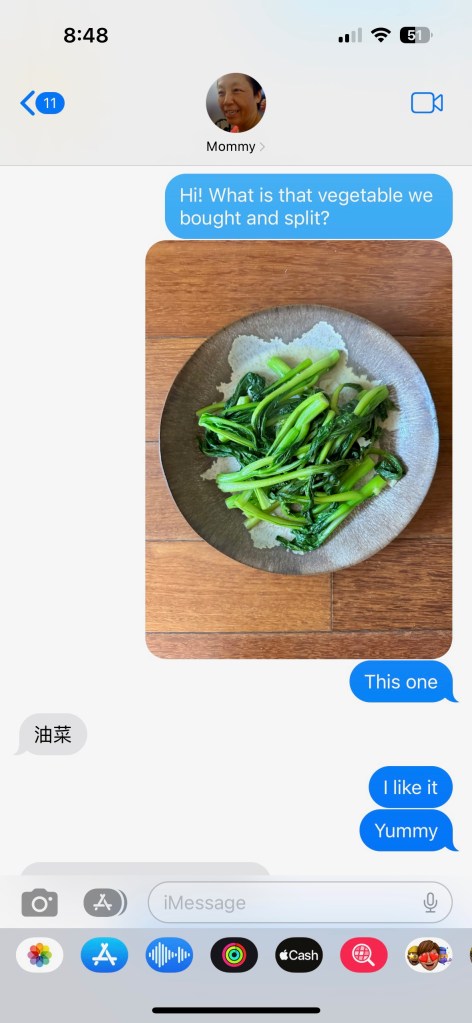There are so many leafy green vegetables in Asian cooking (and many that look quite similar), it’s often hard to know what to choose.

A recent favorite of mine is yu choy. Yu choy is found in most Asian markets and is usually one of the cheaper veggies ($2 per pound compared to, say, pea shoots priced at $10 per pound). I like yu choy more than it’s sister veg, bok choy, as it’s less fibrous and chewy. While I love bok choy for aesthetic reasons (they’re so cute and bulbous!) I find them to be a pain to eat — I almost always bite off more than I can handle and end up chewing… and chewing… and chewing. Yu choy is comparably more bite-sized and crisp, a great accompaniment to any main.
Here I’ve prepared some yu choy, sautéed with 2-3 cloves of sliced garlic and a bit of salt. This whole dish took 5 minutes to wash, saute and cook the veggies. Easy peasy!

I bought this batch of yu choy on a recent visit to the grocery store with my mom. Like most vegetables, the yu choy was sold in a humongous bag – enough for multiple meals. Rather than each of us eating yu choy non-stop for a week, we split a bag and cooked it separately in our respective homes. When I finally cooked it, I was pleasantly surprised by the taste and had to ask my mom what it is we just ate. Her answer (or rather, the Google Translate version of it) took me by surprise:


Turns out yu choy is a close relative to rapeseed, often used to make canola oil. The translation of what my mom texted is in fact ‘oil vegetable’. A simple innocuous explanation for a horrifying google translate result!
Leave a comment